The lake town of Copacabana on the shore of Isla del Sol is for most travellers a stop off point before reaching the island. Hailed in Lonely Planet as a little too tourist-ready we weren't particularly excited about spending too much time there. However after walking past the beautiful cathedral to get to our hostal, finding out that cars were to be blessed the next day and knowing we would soon be leaving the amazingly cheap land that is Bolivia we decided to spend the day there.
As the sun shone down on us with its glorious rays we headed to the cathedral early to get a peek inside and wait for the car blessings. Outside there was a heap of stalls selling all imaginable religious tat, which 'the other' Emily and I took great joy in purchasing. Also available were good luck charms and witches trinkets, (everything I love about Bolivia) ready to bless the cars. As each new car drive past they were adorned with flowers and petals and bottles of champagne were cracked on their hoods giving luck to the driver.
After this exciting feast for the eyes and after I'd haggled down the price of a stuffed armadillo we headed up the mountain to the hilltop cemetery to enjoy fabulous views of he city. Being the wuss I am with heights and with a general inability to not slip and fall I found both the walk up and down less than satisfying but the view over the crystal clear lake and the beautifully adorned candle lit graves were worth it.
SURVIVAL TIP: Don't always listen to the guide, don't get me wrong Lonely Planet had good things to say about Copacabana but that one line put me off when it shouldn't have. Get a feel for the place and if you want to stay and can afford the time, stay! You probably won't be coming back in a while.
On arriving in La Paz there was one thing we were all in agreement we had to do, Cholitas Wresling. The women of Bolivia wear a traditional dress that every gringo is trying to get a sneaky secret shot of. The idea of watching these traditionally turned out women throw down in the ring was intriguing.
We were picked up by the shuttle bus and driven high up to the peaks of La Paz (with views to die for) before reaching our desination, what appeared to be an old basketball court with a ring set up in the middle.
After collecting our free empanadas and washing them down with a coke the show got underway. We noticed how the Bolivians were all sat high up on the concrete steps but assumed the front row seats were for gringos only, little did we know...
It started calmly enough with male wrestlers walking out to comedy music and throwing themselves off the rings. There was always an underdog and the ref was a sly old fox. However 20 minutes in I'd seen one wrestler catch fire and had been frantically dodging half eaten empanadas and eggs by the bucket load that were being pelted at the ring. As the first Cholita came out the crowd roared but me and my friends glanced awkwardly at each other between hysterical laughter as we witnessed Texas chainsaw massacre man choke a Cholita by her pigtails.
No worry, before long it was all girl on girl action and the crowd managed to forget any pity they had once felt and continued to hurl half eaten snacks into the ring. As we were ushered back onto the bus I felt the urge to stay longer but the free Cholitas keying made up for it!
SURVIVAL TIP:
Wear layers, it gets cold and a raincoat to protect you from egg splatterings!
The Uyuni Salt Flats Tour is a must do on the Gringo trail and a great way to get from one country to the other without the hassle of border crossing (there's a special border just for the tour, otherwise you have to go way up north to cross).
The 3 day tour has become some what of a blur, I have never seen such diverse scenery in so short a time. Within 3 days we saw countless mountains, lakes and volcanoes speckled with llamas and flocks of flamingoes. It even got a bit boring, "Oh great, another lake", I now cringe at my lack of enthusiasm! We drove through the desert named after Salvador Dali for its likeness to his surreal paintings. We climbed giant rock formations and relaxed out muscles in hot springs. We saw natural gases bubbling out of mud pools from the earths core and felt the strange sensations of altitude sickness after climbing to nearly 5000m in a day. It was awesome! And we had Abba's greatest hits as our soundtrack. Say no more.
We were moving fast and managed to visit the train cemetery on our second day, the place where trains go to die! So that we could get up early to see the sun rise over the Salt Flats. A peaceful if freezing morning we watched the sun dance over the thin layer of water that lay on top of the ice. We moved further onto the flat to take our trick photos and be dazzled by the bleak expanse of blinding white salt.
This tour was a definite highlight, magical scenery, great friends and good food.
SURVIVAL TIP:
It's bloody freezing! Take all the warm clothes you can and some coca leaves to kerb the altitude sickness.
Isla del Sol is located in the southern part of Lake Titicaca, Bolivia. According to Incan mythology it is here that the sun god and the Incan religion was born.
We took a boat across the lake to the island from copacabana and spent a night on the north shore which was quiet and peaceful and full of beach piggies! Aaaaaaah!
There are apparently over 80 ruins on the island, mostly all dating back to Inca times. We got up early on our second day ready to hike to the main tourist attraction and set off with our guide. The views were spectacular and we looked out to the island of the moon, where virgins were sacrificed and to the point in the lake where a lost city is meant to be hidden, rich in Incan gold. We learnt about the mysterious legends of the Inca's, seeing the holes in the rock where the sun and moon were born from and the marks on the earth where they took their first steps. We gazed at the natural rock formations of puma head and frog which all tied together the beautiful story of creation. We sat round the sacrifice table with its 12 seats to mark the months and 4 larger seats pointing north, south, east and west. It was fabulous to learn before we embarked towards Peru and Macchu Picchu.
We then took a boat to the southern part of the island for our last night. Our hostel hung perilously on the cliffs edge and as I stepped out of the shower that morning I was greeted by the great abyss of the lake and the rolling mountains. We went for a walk to meet llamas an had a dinner of freshly caught trout before retiring. Amazing.
My friend Ollie and I opted out of the perilous bus ride and took a 16 seater plane to Rurre flying close to the mountains for fabulous views. After a night in town, drinking cocktails at the aptly named 'Moskito' bar we got up early to board our canoe to camp. We were part of two groups of 5 and found our camp after wading through flooded estuaries barefoot carrying supplies over our heads. I managed to drop our bag of spuds and onions after slipping down a bank of chancho poo (rainforest pigs that resemble disneys Pumba!)
Our 3 days consisted of jungle trails spotting monkeys and creepy critters and learning about the medicinal purposes of plants and trees. Our guide was a wealth of knowledge with a wicked sense of humour. We found trees whose bark could kill or send shaman on flights to meet the Gods as well as leaves to cool insect bites and the leaf cutter and other giant ants that make them necessary.
The obligatory Tarzan swing was executed better by some than others and we were fed extremely well throughout our whole stay.
Unfortunately our midnight jungle walk saw no pumas or jaguars but we all left with a piece of carefully crafted jungle jewellery, be it ring or necklace.
Second to Macchu Picchu my next big must see was the Amazon jungle. Knowing that my cheapest option was to do a trip from Bolivia I set off to the small town of Rurrenbaque for a 3 day jungle tour followed by a 3 day pampas tour. Not actually on the Amazon but linked to its waters Rurrenbaque is located on the Beni River, close to Madidi National Park, gateway to the Bolivian rainforest.
The Pampas tour was somewhat different, less jungle and more wildlife spotting from the safety of your canoe. True it was much easier and tourist ready and the whole experience felt more like being on a tourist conveyor belt but the wealth of wildlife on display couldn't be beat. With Eco-Tourism a current buzz word in these sorts of endeavours it was clear that our guides cared very much about the jungle and it's inhabitants, their home and their neighbours.
Each day was jampacked with activities and we had cayman and monkeys as regular visitors to camp. Our guide Diego took the limelight when piraña fishing as each gringo tried and failed to catch a bite.
Anaconda hunting, swimming with pink dolphins, a football match at sunset and spotting caymans eyes in the night were among the other activities enjoyed by the group. The hot sweaty work of wading through mosquito ridden marshlands in 'the hope' of finding a giant snake wasn't my idea of a great time but seeing such an amazing creature was surely awesome. Animal rights activists should probably look away now!
All in all the jungle tour felt more real and given the time I would have liked to venture deeper into the rainforest to get a real sense of what it's like to live and survive amongst the wildlife. The pampas was more tourist ready but you got to see animals up close and yet still in their natural habitat.
SURVIVAL TIP: Take mosquito repellant and apply it LIBERALLY! I counted 50 bites on my left leg alone and I had 50% DEET!
I love dinosaurs. I've been hooked since The Land Before Time. I watched the making of Jurassic Park when I was little and got so terrified my Mom wouldn't let me see it at the cinema, a trauma I still carry with me today.
40 minutes out of the city of Sucre lies El Parque Cretavcio where you can see over 5000 real life dinosaur tracks fossilised in the earth. They were discovered by a cement factory which still functions nearby.
The park itself mounted high on a hill overlooks the wall of prints which would have been the marshland of the dinosaurs. Dinosaur sculptures are accompanied by the sounds of the beasts transporting the child in you back in time. There is also a museum and play area and the park boasts one of the worlds largest sculptures, a replica of Titanosaurus. It is also the largest paleontological site in the world.
Fellow backpackers told me they found it boring and it is true you could do the whole park in 20 minutes, but with Walking with Dinosaurs playing on a loop (in English!) in the cinema and plastic models to mount I could have stayed there all day!
The dinosaur phone booths dotted around town got us pretty excited too!
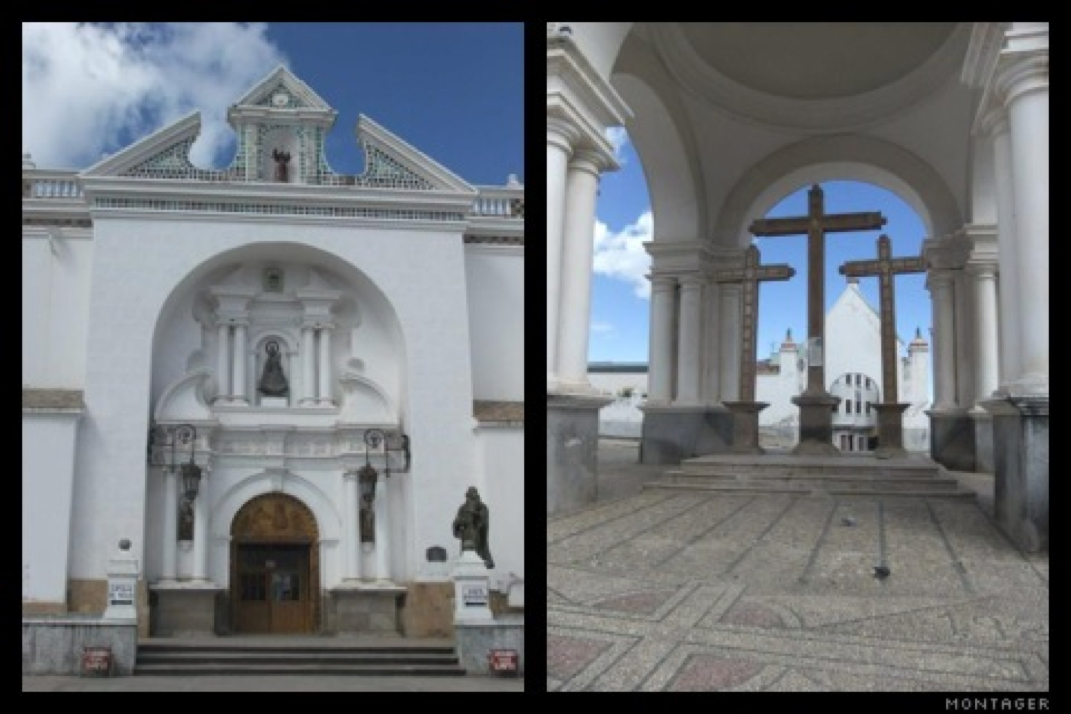

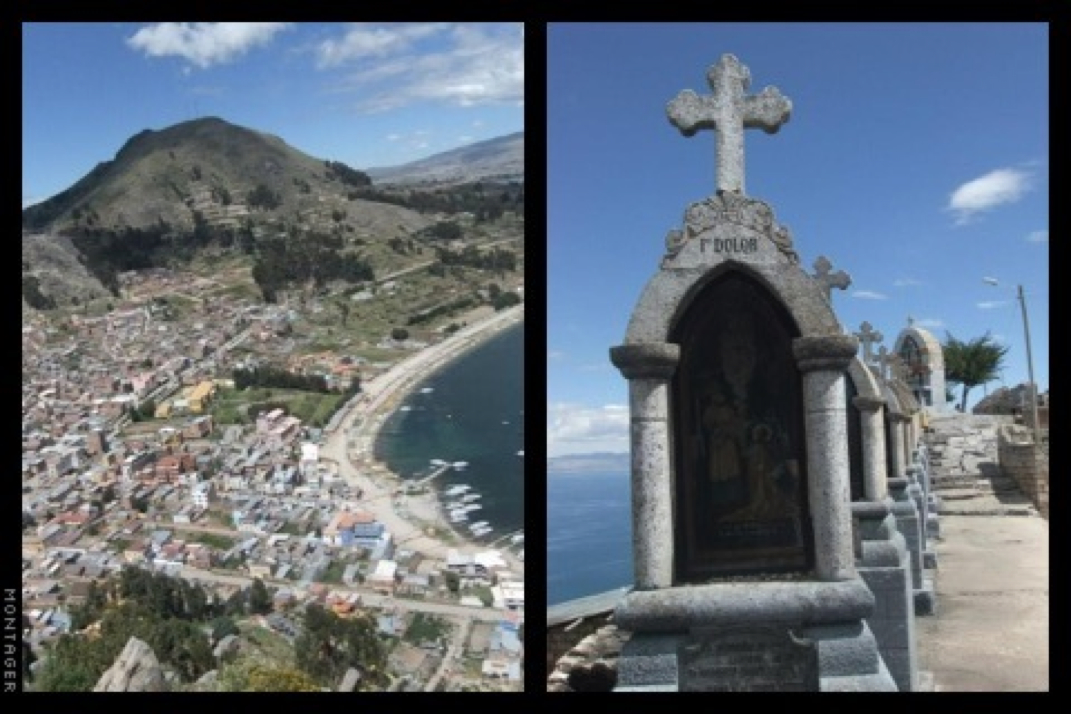
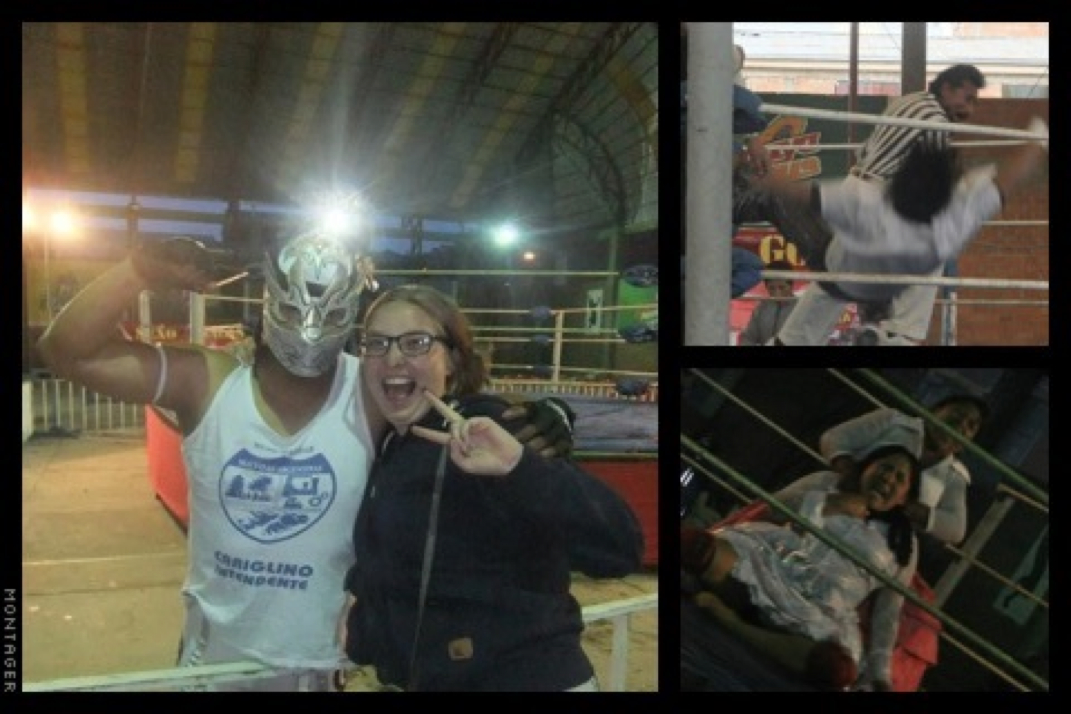
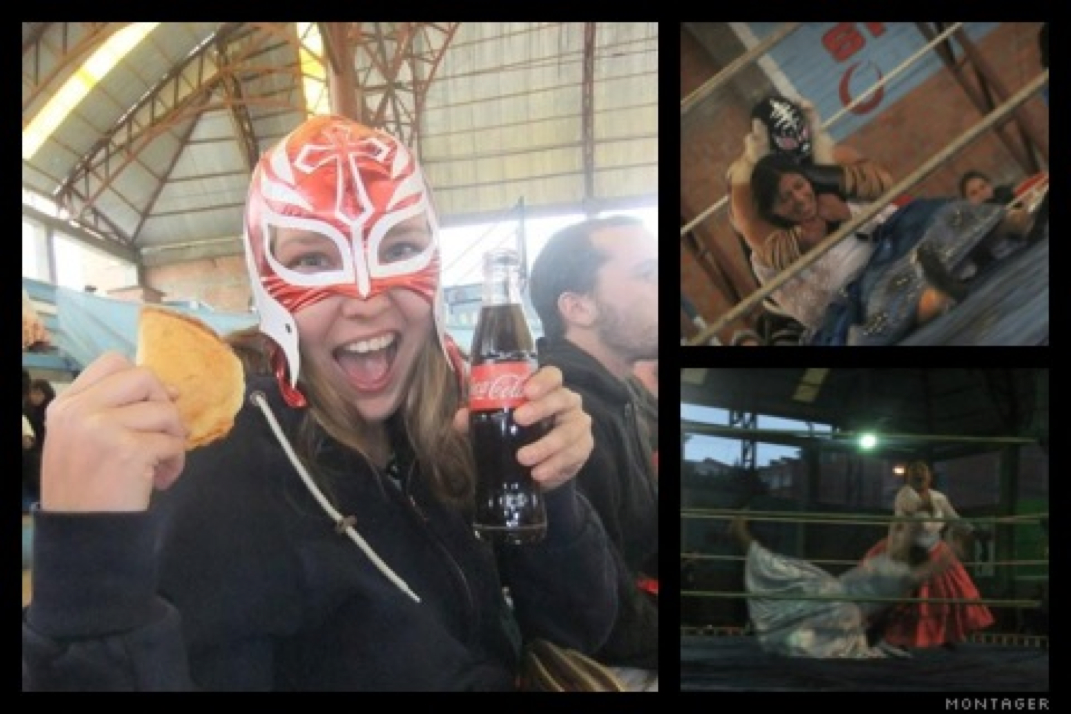
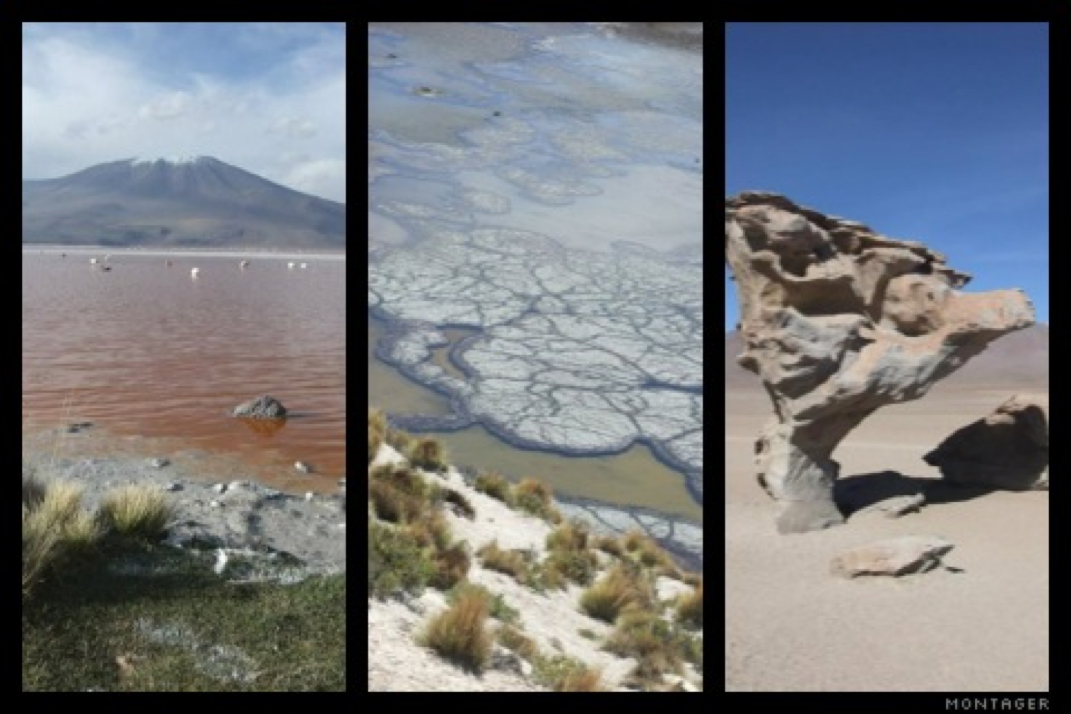
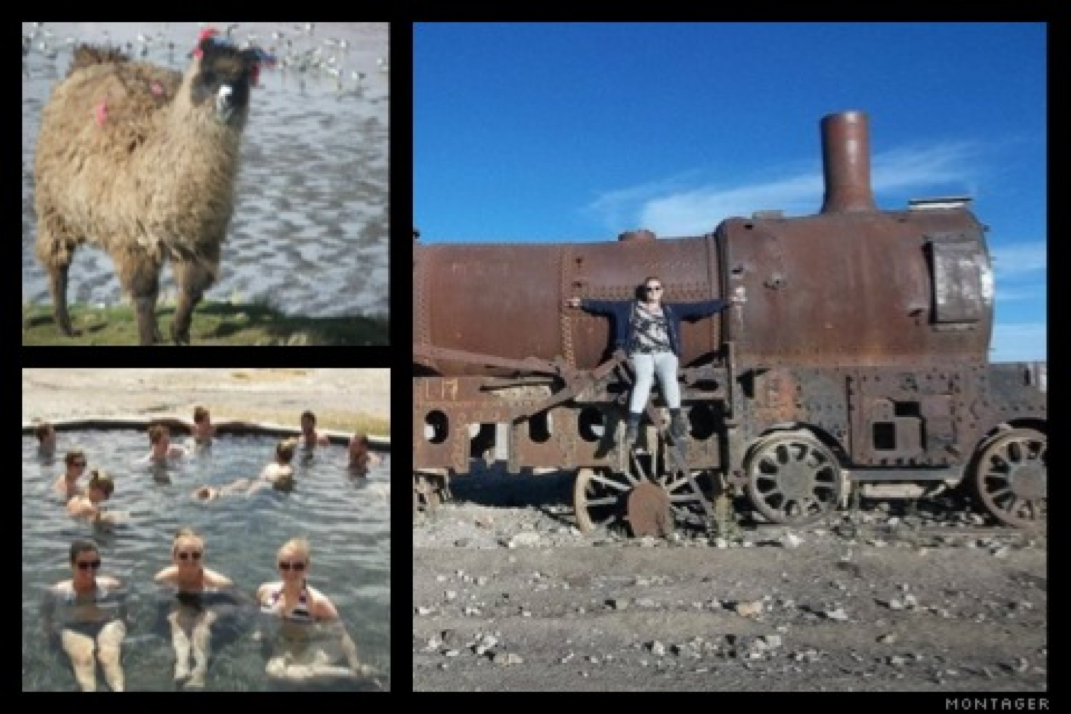


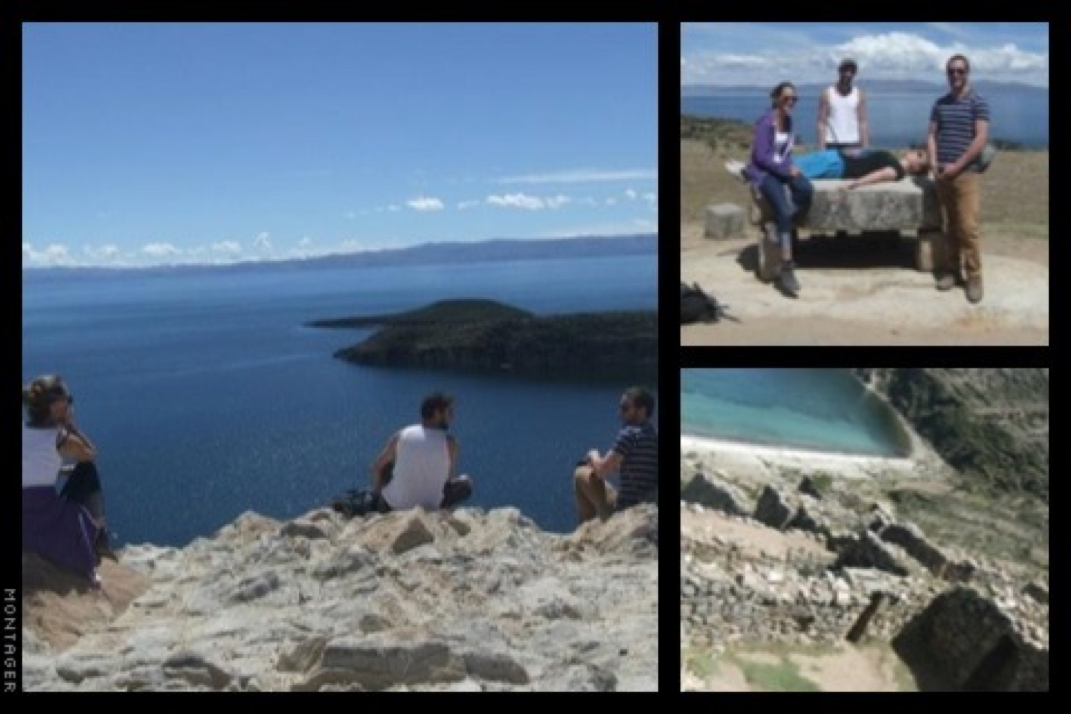
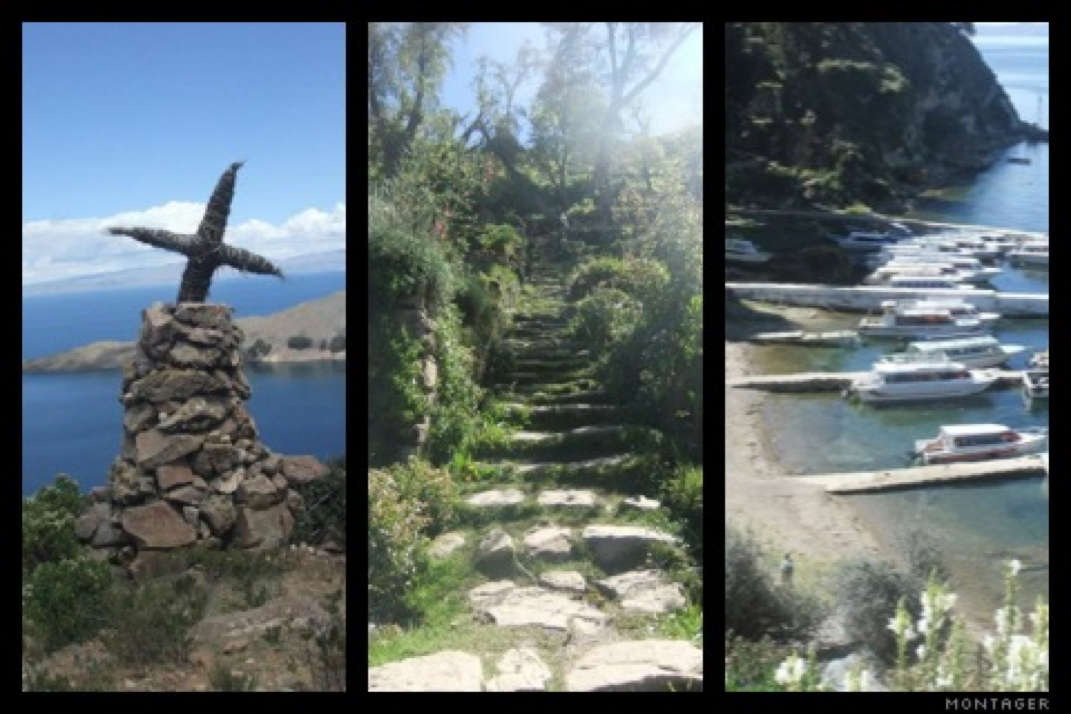
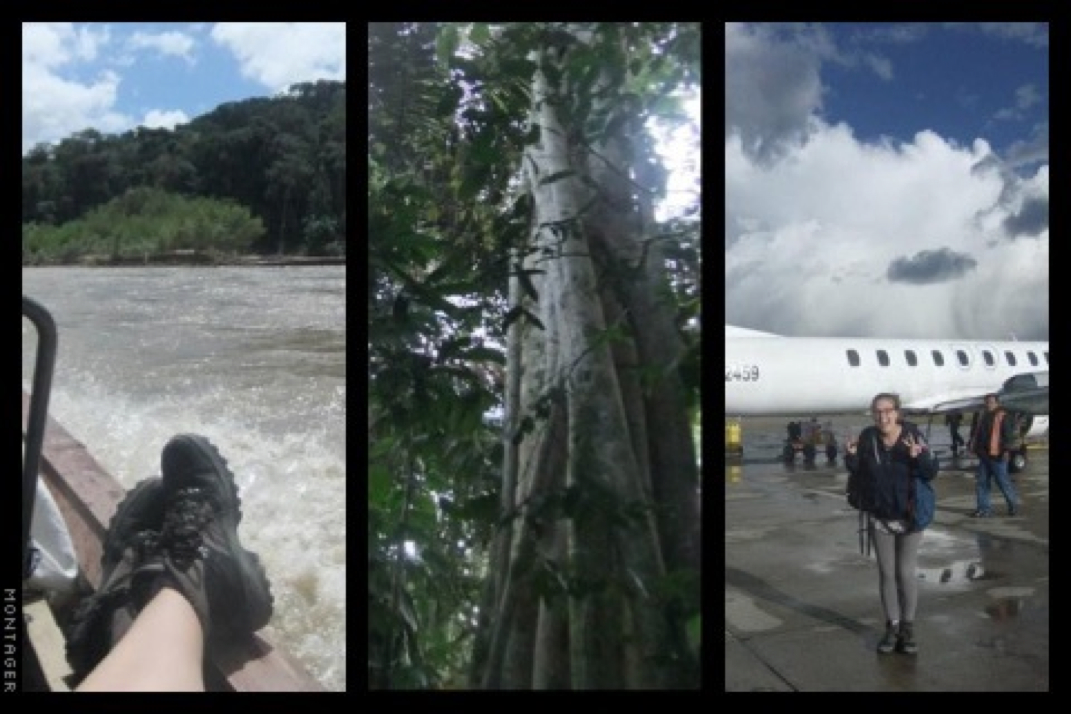
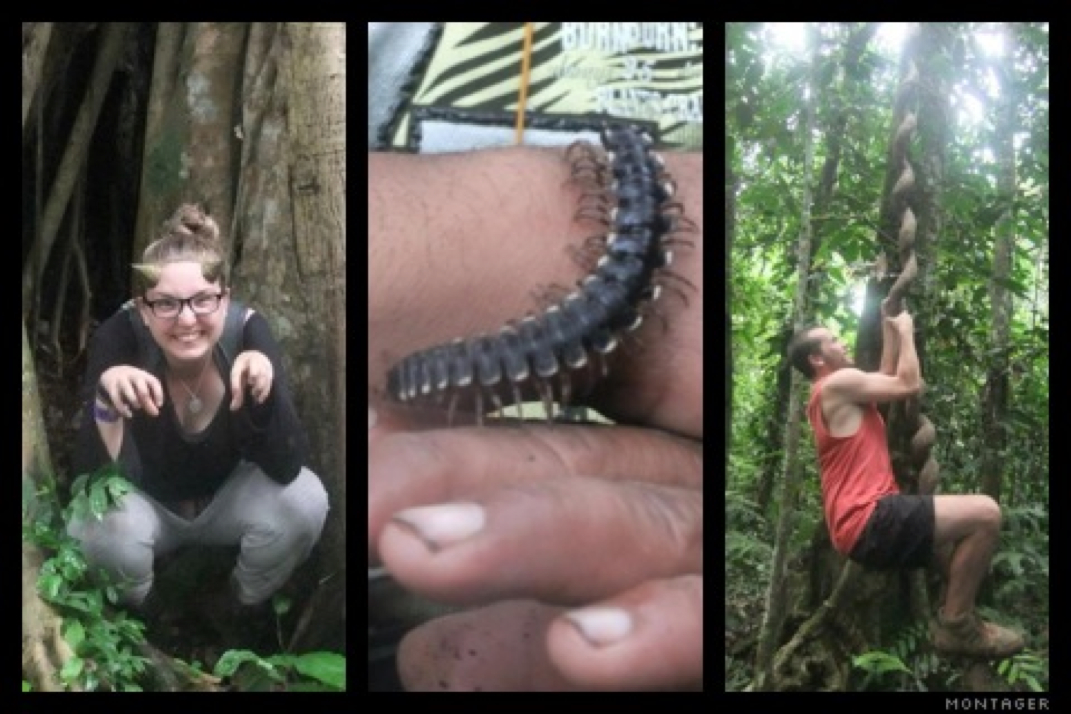

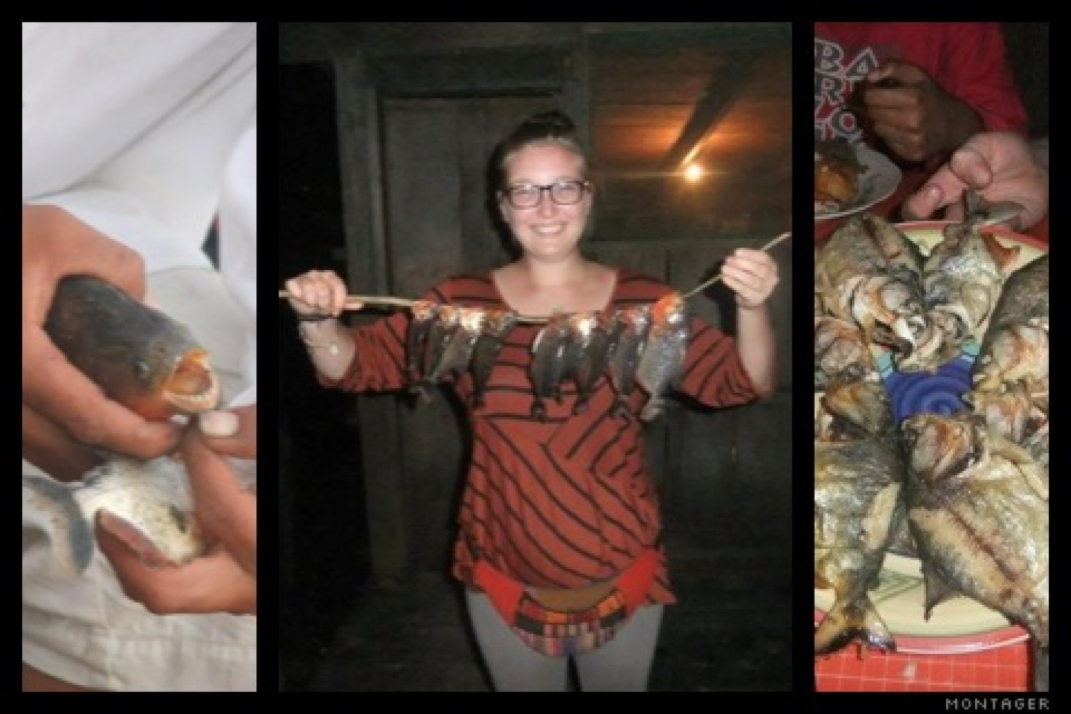
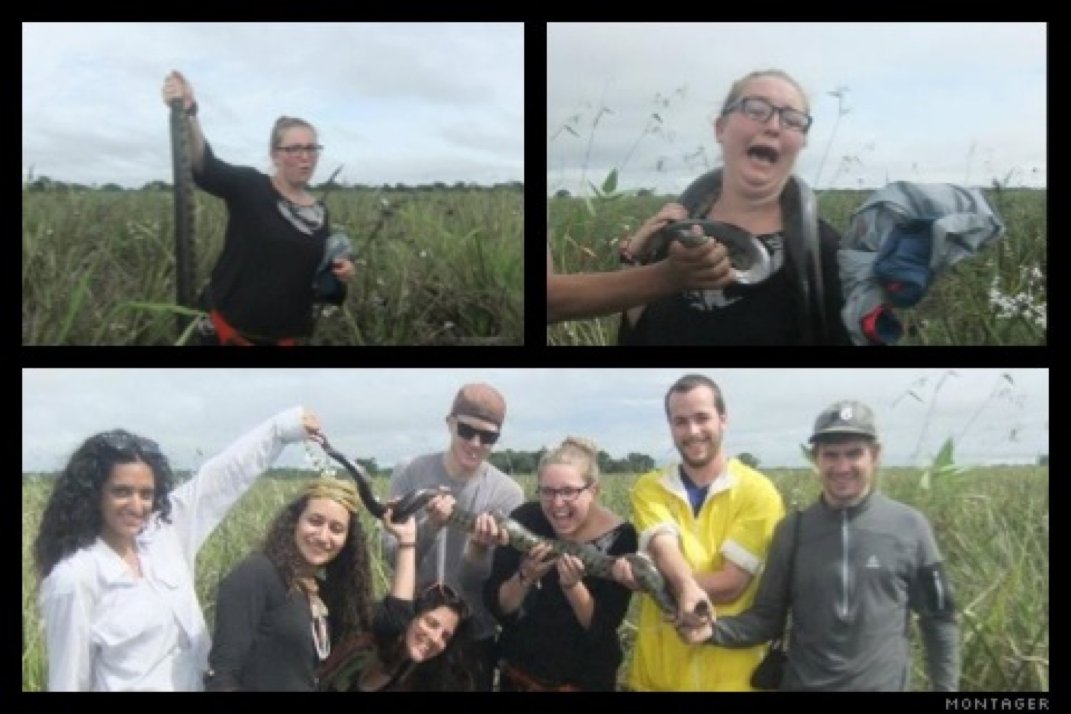
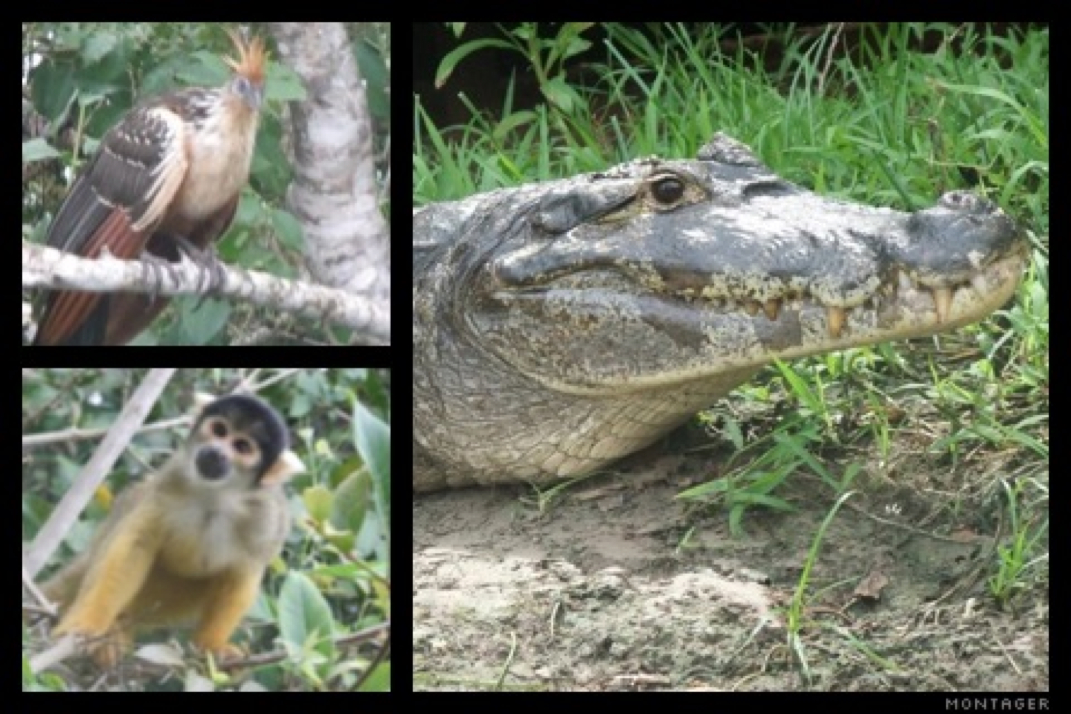
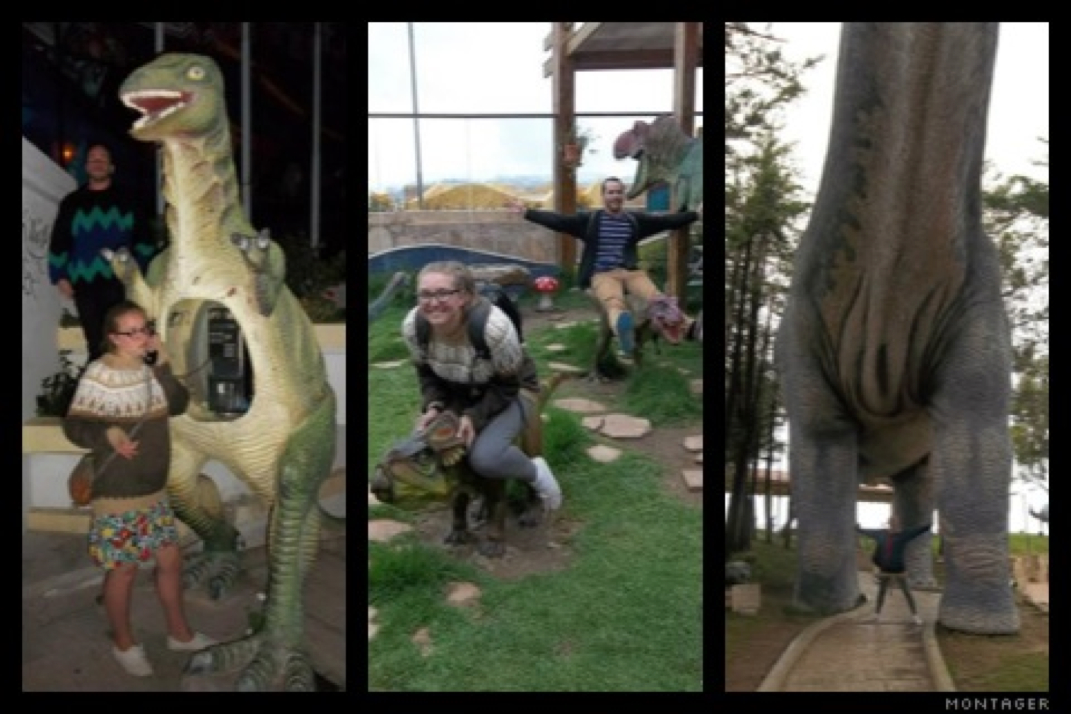
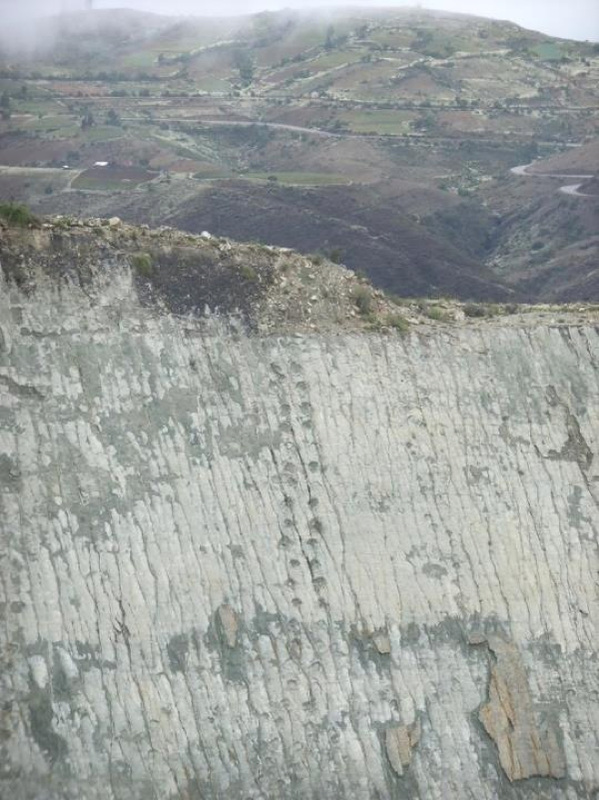
 RSS Feed
RSS Feed